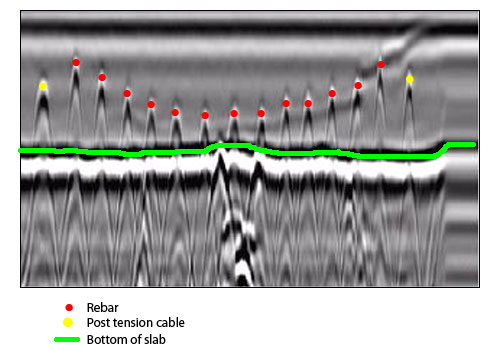RainierGPR Concrete Scanning: Precision and Security for Building And Construction Projects
RainierGPR Concrete Scanning: Precision and Security for Building And Construction Projects
Blog Article
Exploring the Key Advantages of Concrete Scanning in Construction Projects
In the world of modern building and construction practices, the application of concrete scanning technology has actually emerged as a critical device for making certain job performance and structural honesty. From improving safety and security procedures to precisely spotting energies hidden under the surface, the advantages of concrete scanning are diverse. RainierGPR Concrete Scanning.
Enhanced Security Procedures
Making use of sophisticated concrete scanning modern technology enhances precaution on construction sites by supplying precise detection of prospective threats hidden underneath the surface area. This innovation enables building teams to identify rebar, avenues, post-tension wires, and various other obstructions before excavation or boring, substantially lowering the risk of accidents. By pinpointing these elements exactly, employees can prevent harmful critical architectural parts, hence avoiding injuries, delays, and costly repair services.
Moreover, concrete scanning plays a vital duty in making sure the honesty of existing frameworks throughout restorations or developments. By spotting weak points, voids, or deterioration within concrete components, engineers can resolve these concerns proactively, improving the overall safety and long life of the building. This aggressive technique not only minimizes the threat of architectural failings but additionally lessens the capacity for crashes triggered by unexpected architectural shortages.
Fundamentally, the implementation of concrete scanning innovation works as a positive precaution that safeguards both building and construction employees and the structural stability of structures, ultimately adding to the total success and efficiency of building projects. - RainierGPR Concrete Scanning
Accurate Discovery of Utilities
Concrete scanning technology promotes accurate identification of below ground energies, improving building website safety and effectiveness. Precise discovery of utilities is vital in building tasks to stop expensive damages, job hold-ups, and most importantly, make certain the safety of employees and the general public. By using innovative scanning technologies such as ground-penetrating radar (GPR) and electromagnetic induction, construction teams can draw up the area of buried pipes, cable televisions, and various other energies with high degrees of precision.

Time and Price Efficiency

Concrete scanning technology allows building teams to properly locate rebar, post-tension click here for more cords, and other ingrained objects within concrete frameworks. This precise information assists in staying clear of costly blunders such as unexpected damages to vital elements throughout drilling, cutting, or coring tasks. In addition, by recognizing potential risks ahead of time, the requirement for expensive repair services or revamp due to problems can be decreased, leading to cost savings for the job.

Additionally, the capacity to swiftly and properly spot utilities underneath the surface area without triggering any type of damages not just saves time yet also avoids expensive disturbances to existing infrastructure. In general, the time and expense efficiency advantages of concrete scanning make it an invaluable tool for enhancing building and construction task monitoring and implementation.
Conservation of Structural Integrity
Preserving the architectural honesty of buildings and infrastructure is critical in guaranteeing long-term stability and security. Concrete scanning plays a critical duty in this preservation procedure by enabling construction professionals to determine potential threats to the architectural honesty of a structure or infrastructure before they rise right into significant problems. With the usage of innovative scanning innovations such as ground-penetrating radar (GPR) and electromagnetic induction, building and construction teams can non-invasively assess the problem of concrete structures, situate rebar, post-tension cable televisions, and other ingrained elements, and recognize any kind of spaces, fractures, or deterioration within the concrete.
Improved Task Preparation
In order to make certain the successful execution of building jobs, precise focus to detail and detailed preparation are necessary elements that stem from an extensive understanding of the structural problems identified via concrete scanning. Improved job preparation, promoted by concrete scanning, permits building groups to preemptively deal with prospective difficulties, allocate resources more efficiently, and establish sensible timelines. By accurately recognizing the area of rebar, post-tension cable televisions, and various other embedded objects within concrete structures, job supervisors can create extra accurate building plans that minimize the risk of pricey mistakes or delays. Additionally, the data acquired from concrete scanning enables stakeholders to make informed choices regarding structural alterations, improvements, or developments, leading to smoother project shifts and enhanced total project outcomes. Eventually, including concrete scanning into the job preparation phase boosts control amongst group participants, promotes positive analytic, and contributes to the effective distribution of building and construction Full Report projects within spending plan and schedule restrictions.
Conclusion
To conclude, concrete scanning supplies countless benefits in building and construction tasks. By improving precaution, precisely spotting energies, enhancing time and expense performance, protecting structural honesty, and helping in task planning, concrete scanning shows to be a vital tool for effective project implementation. Its capability to mitigate threats, look at these guys increase performance, and make sure project honesty makes it a vital possession for building and construction professionals.
In the world of modern construction practices, the utilization of concrete scanning technology has arised as a critical tool for making certain job efficiency and structural integrity.Concrete scanning innovation makes it possible for construction groups to precisely locate rebar, post-tension cable televisions, and other ingrained objects within concrete structures. Via the use of innovative scanning modern technologies such as ground-penetrating radar (GPR) and electro-magnetic induction, construction groups can non-invasively examine the condition of concrete structures, locate rebar, post-tension wires, and various other embedded elements, and determine any kind of gaps, fractures, or degeneration within the concrete.
In order to guarantee the successful implementation of construction tasks, thorough interest to detail and comprehensive preparation are necessary components that stem from a detailed understanding of the structural problems recognized through concrete scanning. Inevitably, integrating concrete scanning right into the project planning stage improves coordination among group members, cultivates proactive analytical, and contributes to the successful delivery of building and construction projects within spending plan and timetable restraints.
Report this page